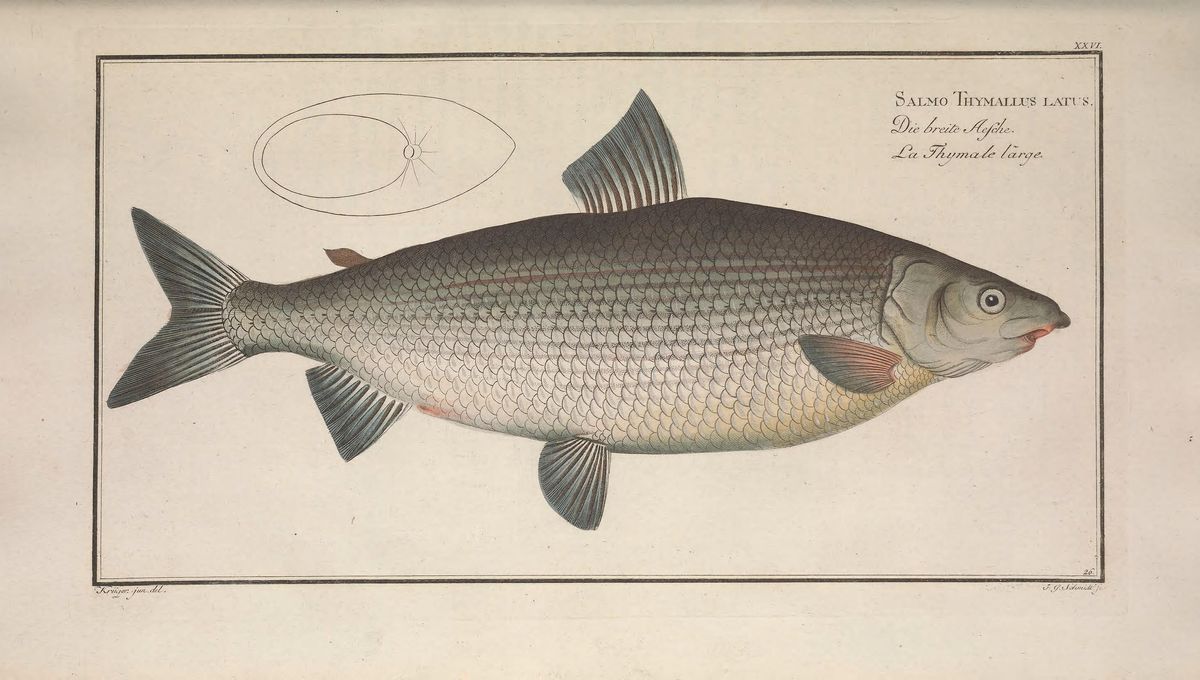
The houting, a fish that lived in North Sea estuaries and was officially classified as extinct in 2008, turns out to be alive and kicking… or flopping. According to research from the University of Amsterdam and the Natural History Museum, London, the species is actually quite common. But the story is more complicated than it sounds.
In 2008, the houting was officially categorized as extinct according to the International Union for Conservation of Nature’s (IUCN) Red List of Threatened Species. This list serves as an inventory of conservation status and extinction risk of biological species from across the globe. The decision was based on morphological analysis of the gill rakers and the shape of snout of this fish species.
According to this earlier assessment, the fish that were previously thought to be houting (Coregonus oxyrinchus) were in fact a separate species of European whitefish (Coregonus lavaretus). This research led to the decision to classify houting as extinct, but it seems this was a mistake.
“It often happens that there is confusion as to whether animals are one species or not. Especially when fish are involved,” Rob Kroes, from the Department of Freshwater and Marine Ecology at the University of Amsterdam, said in a statement.
“They often have a lot of variation in morphological traits within a species. In this case, biologists long thought that houting is a different species from the European whitefish due to the length of the snout and the number of gill rakers. But these traits are simply not suitable to say that houting is a different species. Our DNA research now clearly shows that it isn’t.”
Kroes and colleagues from the Natural History Museum isolated mitochondrial DNA (mDNA) from the historical houting specimens, one of which actually came from a dried North Sea houting that was caught in 1754 and used by Linnaeus for categorizing the species. With this DNA, the team established a phylogenetic tree – a diagram that shows the lines of evolutionary descent of different species – which showed that houting (C. oxyrinchus) are in fact the same group as the European whitefish (C. lavaretus).
“The European whitefish is fairly widespread in Western and Northern Europe, both in freshwater rivers and lakes, estuaries and the sea,” Kroes added. “Because we found no species difference between houting of the past and today’s European whitefish, we do not consider the houting to be extinct.”
It seems the species needs to have its official Latin name changed to address this confusion. However, a definitive adjustment of the name requires more research into the DNA of the dried specimen from 1754. However, this may not be straightforward.
“The DNA is old and damaged,” Kroes explained, “but I think we should try. At the moment, the protected status of various coregonids is a mess. According to the IUCN, North Sea houting is extinct; at the same time, there are various European nature laws that state that both houting and European whitefish must be protected. So we are actually protecting an extinct species that is just swimming around at the moment.”
The study is published in BMC Ecology and Evolution.
Source Link: Fish Species Thought To Be Extinct Is Actually Alive And Thriving